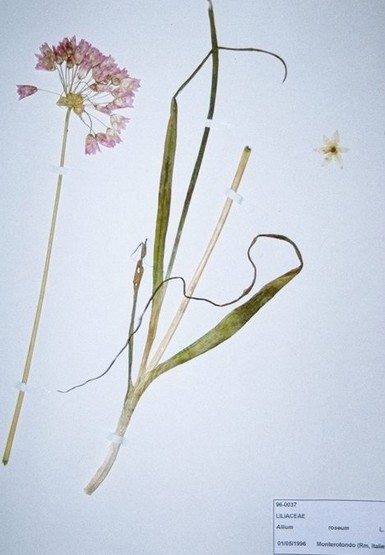Methods of development of an herbarium General Principles After their determination and their identification, the plants are dried under press before being fixed by adhesive without acid on paper without acid. The boards are then gathered by family by respecting a phylogenic classification. Technical Advises Drying The plants are dried in newsprint which is changed regularly until complete drying (except, the sheet directly in contact with the plant). When a batch of plants is thick, it is recommended to place some boards of rigid paperboard to avoid the deformation of the plants. Pressing. It is not necessary that the plants are crushed. The press can be simple. For example, press can be easily made up of 2 grids of refrigerator maintained tightened by straps or various masses distributed uniformly on the surface of a board.  Quality of the exsiccata. To obtain samples of quality, drying must start as soon as possible after harvest. It is often noted that the plants lose their color after drying, except those containing sulphur (example naturally: garlic). To cure this disadvantage, the plants can be put in the presence of sulphur vapor just after harvest. The sulphur pastilles used for the sterilization of the wine barrels are appropriate. However, this method is tiresome. Cost of development the size of the boards is, commonly, of approximately 45 cm X 28 cm. However, these dimensions do not constitute an obligatory standard. Thus, Fournier indicates in the Four flora of France (1977, republication) that the herbarium itself can extremely well be made up on small size, for example on paper folios with machine (to be written). The boards which I use measure 32 cm X 29 cm and more than have an unit cost partial (except labour) 10 times lower than that calculated for the traditional boards, while respecting the schedule of conditions according to: paper and adhesive without acid, grammage raised, translucent paper (Bray and Al, 1997). The adhesive used to fix the dried plants can be paste distributed with a glue gun or rubber cement. This last product is sold under various marks but will always have the same chemical composition, containing natural rubber. Labelling The label or the data-processing recording of each board must comprise following information: – a reference number, – the family, the kind, the specie and the possible names infra-species.These indications must respect the nomenclature in force, – abbreviation of the name of the specific author, – the possible synonym, – the date of collection, – the place of collection. The use of a system of total positioning is recommended. It will make it possible to specify the latitude and longitude. For altitude, taking into account the error of the apparatus, it is preferable to use an altimeter, – the name of the collector and/or the name of the identifier, – the description of the biotope or phytosociological association (this last indication can, possibly, not be present on the label if it already exists in the data base computerized). In the case of the first labelling, the label is placed in bottom and on the right. If it is about a label bringing of the corrections, it must be placed in bottom and on the left.
Quality of the exsiccata. To obtain samples of quality, drying must start as soon as possible after harvest. It is often noted that the plants lose their color after drying, except those containing sulphur (example naturally: garlic). To cure this disadvantage, the plants can be put in the presence of sulphur vapor just after harvest. The sulphur pastilles used for the sterilization of the wine barrels are appropriate. However, this method is tiresome. Cost of development the size of the boards is, commonly, of approximately 45 cm X 28 cm. However, these dimensions do not constitute an obligatory standard. Thus, Fournier indicates in the Four flora of France (1977, republication) that the herbarium itself can extremely well be made up on small size, for example on paper folios with machine (to be written). The boards which I use measure 32 cm X 29 cm and more than have an unit cost partial (except labour) 10 times lower than that calculated for the traditional boards, while respecting the schedule of conditions according to: paper and adhesive without acid, grammage raised, translucent paper (Bray and Al, 1997). The adhesive used to fix the dried plants can be paste distributed with a glue gun or rubber cement. This last product is sold under various marks but will always have the same chemical composition, containing natural rubber. Labelling The label or the data-processing recording of each board must comprise following information: – a reference number, – the family, the kind, the specie and the possible names infra-species.These indications must respect the nomenclature in force, – abbreviation of the name of the specific author, – the possible synonym, – the date of collection, – the place of collection. The use of a system of total positioning is recommended. It will make it possible to specify the latitude and longitude. For altitude, taking into account the error of the apparatus, it is preferable to use an altimeter, – the name of the collector and/or the name of the identifier, – the description of the biotope or phytosociological association (this last indication can, possibly, not be present on the label if it already exists in the data base computerized). In the case of the first labelling, the label is placed in bottom and on the right. If it is about a label bringing of the corrections, it must be placed in bottom and on the left.

